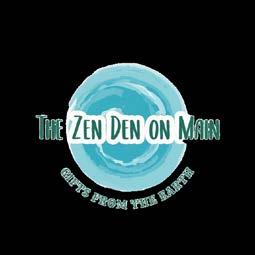

Food & Nutrition Issue Food & Nutrition Issue
Publisher’s Letter
PHILADELPHIA EDITION
Owner/Publisher Shae Marcus
Communications Nancy Smith Seigle
Editors Sara Gurgen
Randy Kambic
Design & Production Suzzanne M. Siegel
Contributing Writers Dr. Philip Mach
Social Media Manager Rickcresan Angkay
Asst Extraordinaire Jhona Cordero
CONTACT US
Sales: 856-797-2227
Publisher@NAPhiladelphia.com
Publishing/Editing:
230 N. Maple Ave. Ste. B1 #302 Marlton, NJ 08053
Ph: 856-797-2227
Publisher@NAPhiladelphia.com
NAPhiladelphia.com
NATIONAL TEAM
CEO Kimberly B. Whittle
National Editor Sandra Yeyati
Editor Brooke Goode
Copy Editor/Proofing Melanie Rankin
Layout Flip180 Media
CONTACT US
Natural Awakenings Publishing Corporation
350 Main Street, Suite 9B Bedminster, NJ 07921
Ph: 239-206-2000
NaturalAwakenings@KnoWEwell.com
Cover image by Adobe Stock
© 2024 by Natural Awakenings. All rights reserved. Although some parts of this publication may be reproduced and reprinted, we require that prior permission be obtained in writing. Natural Awakenings is a free publication distributed locally and is supported by our advertisers. Please call to find a location near you or if you would like copies placed at your business. We do not necessarily endorse the views expressed in the articles and advertisements, nor are we responsible for the products and services advertised. Check with a healthcare professional regarding the appropriate use of any treatment.
Natural Awakenings is printed on partially recycled and fully recyclable newsprint with black soy ink.
Dear Friends,
Welcome to the inaugural issue of Natural Awakenings Philadelphia!
I am thrilled to introduce you to our holistic lifestyle magazine, which has been a labor of love and passion for me and our team. Having served as the publisher of Natural Awakenings South Jersey since 2020, I’ve witnessed firsthand the incredible sense of community that our readership fosters. Transitioning from my previous role in Menswear publishing, the opportunity to acquire Natural Awakenings South Jersey during the pandemic felt like destiny, aligning my professional background with my personal passion for a healthy lifestyle.

Our magazine is more than just pages; it’s where integrated health meets conscious living. Within these pages, you’ll discover a wealth of content covering holistic health, conscious eating, mindful movement, raising healthy kids, eco-friendly living, sustainability, spirituality and inspiring stories from local businesses and events.
As a team, we are deeply committed to serving the community by providing valuable insights, resources and inspiration to empower you on your holistic wellness journey. Whether you are seeking tips for nurturing your body, mind or spirit, or looking for ways to live more sustainably and mindfully, Natural Awakenings Philadelphia is your go-to resource.
I invite you to immerse yourself in the enriching content we’ve curated for you in this inaugural Food and Nutrition issue. Nutrition can have a diverse meaning for each of us, reflecting our unique lifestyles and beliefs. For many, holistic wellness is not merely about sustenance; it’s a way of life. We understand that what we consume acts as a potent medicine, influencing not only our physical health. but also our emotional and mental well-being.
On a personal note, I’ve witnessed the transformative power of mindful eating within my own family. As a parent of children with ADHD, avoiding artificial additives, excessive sugars and processed foods has become crucial. The immediate behavioral changes observed when my son consumes something containing Red Dye 40 serve as a poignant reminder of the intricate relationship between diet and well-being.
Nurturing our children’s palates from infancy lays the foundation for a lifelong appreciation of wholesome, flavorful foods. Creating homemade baby food allowed my family to savor bold textures and tastes, fostering a love for nourishing ingredients that continues to blossom.
Our article entitled “Making Baby Food at Home, Expanding Palates Without Artificial Additives,” sets the stage for a plethora of other engaging articles. Our feature story “Food Trends for 2024, What We Are Looking for at the Dinner Table” offers a glimpse into the ever-evolving landscape of culinary innovation, inviting you to embrace new tastes and experiences. Furthermore, we suggest you dive into “Functional Medicine Approach to Colon Health,” “Planting for the Planet, Seven Herbs to Grow, Eat and Heal” and many more highly informative pieces.
Let this be the beginning of a transformative journey towards a healthier, more balanced and conscious way of life. Thank you for welcoming us into your lives, and we look forward to being a part of your holistic wellness journey.







Applied Alchemy Crucible to Begin This Month
Andrea Regal, of Applied Universal Alchemy, will begin facilitating the Applied Alchemy Crucible this month.
“The Applied Alchemy Crucible is calling in and upon all those who know that physicality is an outcome of consciousness and want to participate in a transformational group where the knowledge and experiences of each member, humanly and beyond, alchemically combine for exponential power to alter our individual patterns, which automatically advances the evolutionary process of humanity,” explains Regal.
According to Regal, the group will experience profound transformation; spiritual activations; transmissions of cutting-edge energetics; honing of intuitive abilities; enhanced dreaming, both in sleep and “dreaming awake”; and access to structures within the energy field, Earth and nature to increase the body’s healing abilities.

“Each monthly two-and-ahalf- to three-hour gathering in the eight-month course will include several 20-minute one-on-one sessions, an energetic practicum and up-to-the minute updates which will reveal what is under and behind all that is occurring in the world and the vital role each member plays in Earth’s redesign,” shares Regal.
Regal invites everyone to “come step into your true self and your power as a multi-existential being in human form evolving this planet and beyond.”
For more information or to register, call 856-904-5566, email Andrea@HealersUniverse.com or visit www.AppliedAlchemy.HealersUniverse.com
There is something infinitely healing in the repeated refrains of nature— the assurance that dawn comes after night, and spring after winter.
—Rachel Carson
Yupaichani Center for Healing Now Serving Philadelphia Area

The Yupaichani Center for Healing is now offering mobile services in the Philadelphia area.
“We offer a revolutionary medical bodywork treatment that is unlike anything offered on the market today,” shares Joseph Cianciulli, founder and main practitioner.
Their Total Body Men’s and Total Body Women’s Treatment Experience incorporates Ayurveda marma (acupressure) therapy, energetic cleansing, South American deep-tissue massage, full-body cupping therapy (including hands and feet), aromatherapy, sound therapy and abdominal manipulation.
“We offer all of these modalities and more in one comprehensive one-and-a-half- to two-hour treatment,” adds Cianciulli, a licensed massage therapist and holistic health practitioner specializing in South American Canari medical philosophy and bodywork, and Ayurvedic medicine.
“Our comprehensive treatment follows the bioterrain model for health and well-being with real tangible results,” exclaims Cianciulli. “Our clinic has found nearly all pathologies are linked to a combination of misaligned abdominal organs and blocked meridian pathways. Contact us today to ask how our treatment can give you back your health.”

For more information or to make an appointment, call or text to 215-802-3238 or visit www.YupaichaniCenterForHealing.com
Pranic Healing Bucks County Launches New Website for Classes
To celebrate its new lineup of trainings, Pranic Healing Bucks County has launched a new website just for its classes.
Filled with beautiful pictures of the upcoming class locations, amenities and special features, the website offers visitors another view of Pranic Healing training: It’s not just educational and transformative; it’s also a fun experience in a lovely venue.

The website will be continuously updated with new offerings. Visit Joy of Learning Pranic Healing at www.JoyOfLearningPranicHealing.com
Pranic Healing Bucks County Executive Director Alison Sahoo, CPPT, began Pranic Healing in 2013. She has completed all three levels of Pranic Healing certification, is licensed to teach MCKS Basic Pranic Healing and holds a BS in Physics from McGill University.
For more information about Pranic Healing Bucks County, visit www.PranicHealingBucksCounty.com.
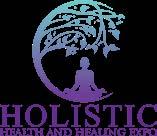



Cancer Increasingly Strikes Young Adults
A study in the journal BMJ Oncology reports a sizable global rise in cancers among adults under 50, with the highest rates found in North America, Australia and Western Europe. Between 1990 and 2019, the incidence of early-onset cancer increased by 79.1 percent, and early-onset cancer deaths rose by 27.7 percent. Of the 29 cancers included in the analysis, nasopharyngeal and prostate cancers showed the fastest upward trend, whereas early-onset liver cancer exhibited the sharpest decrease. In the U.S., early-onset cancer rates rose 12.8 percent, while the incidence rate of individuals 50 and older declined.
Although the exact reasons for this alarming trend have not yet been identified, the researchers pointed to the following likely culprits as the main causes: dietary risk factors, including eating excessive red meat and sodium and not enough fruits and vegetables; alcohol consumption; and tobacco use.

Healthy Plant-Based Diets Reduce Diabetes Risk
In 2021, diabetes affected 6.1 percent of the global population, and that percentage is expected to increase to more than 10 percent by 2050. According to a study in the journal Diabetes & Metabolism, the consumption of a healthy plant-based diet can reduce the risk of developing Type 2 diabetes by 24 percent as compared to those following an unhealthy plant-based diet. These results also applied to those that were genetically predisposed to develop diabetes or had other risk factors such as age, lack of physical activity and obesity.
Championing Opioid-Free Pain Management
According to the U.S. Health Resources and Services Administration, more than 130 Americans die each day from opioid-related drug overdoses. Recognizing that alternative pain management protocols are needed to curtail this ongoing national problem, the state of Minnesota has created a website to identify and promote evidence-based, non-opioid and non-pharmacological options that use complementary and integrative methods.
As reported in the Journal of Integrative and Complementary Medicine, NoPainMN.org was established to provide user-friendly information, including a description of each modality, video demonstrations of the treatments and links to published research and additional online resources. Minnesota’s website covers a wide range of treatment options, such as acupuncture, chiropractic, psychology, rehabilitative therapies, movement classes like tai chi and qigong, and mind-body therapies such as biofeedback and music therapy. The website also includes a searchable list of more than 17,000 practitioners in the state.

The study defined a healthy plant-based diet as one that eliminates animal fats and is low in sugar, sugary drinks, refined grains and starches like potatoes. The research included more than 113,000 British participants that were observed for 12 years. In addition to a lower body mass index and waist size, the researchers noted that normal levels of triglycerides, blood sugar, inflammation and the insulin-like growth factor 1 were also associated with a lower risk of diabetes, and they surmised that a healthy plant-based diet reduced diabetes risk by improving liver and kidney function.

What the ‘Bleep’ Should We Eat
Patients of both doctors and nutritionists in functional medicine often ask them what they should eat. The answer is often to avoid gluten, wheat, dairy, soy, corn, canola oil and more.
After patients are tested and told not to eat eggs, dairy, wheat/gluten, nuts and seeds, they often wonder what is left.
There are many types of diets including keto, paleo, vegan, vegetarian, carnivore and more. What’s best for each individual depends on what our bodies need and what we are sensitive to. The best approach is to obtain a functional blood analysis and food panel. This way, we can determine deficiencies and the foods we are sensitive to.
 Dr. Sean Inselberg
Dr. Sean Inselberg
There’s a difference between a food sensitivity and an allergen. Some people have sensitivities based on the underlying pathology, i.e., Candida, viruses, parasites and small intestinal bacterial overgrowth (SIBO). So, for example, a person may not be allergic to apples, but when they eat them, they may experience terrible bloating, gas and even diarrhea. When our gut is fully assessed any of the mentioned pathogens are accounted for, we can systematically eliminate sensitivities and eat a wider variety of foods. In this scenario, we would eat a low-FODMAP diet and clear out the SIBO with specific herbs that kill the harmful bacterial overgrowth and work to restore the microbiome balance.
Elimination diets work well to uncover what triggers symptoms, and functional medicine testing can reveal what foods are healing and which are causing inflammation and dysfunction.
It’s recommended to keep and maintain a food journal that details all food and drinks for a few months and getting extensive testing to take the guesswork out of getting well.
Dr. Sean Inselberg, DAc, MSc, CNS, is chief executive officer at the Nutritional Wellness Center, located at 1 Cinnaminson Ave., Palmyra, NJ. For more information or to make an appointment, call 856-499-2160 or visit www.NWCNJ.com
Let food be thy medicine and medicine be thy food.
—Hippocrates

Wind Energy Project Threatens
Endangered Bird
A renewable-energy project in the Brazilian state of Bahia is threatening the Lear’s Macaw, a large, blue-feathered parrot with bright yellow rings around its eyes which, according to American Bird Conservancy, has been brought back from extinction in the past but is still considered endangered, with approximately 1,300 adults in existence.
French-based Voltalia is currently building two wind farms that are expected to produce 99.4 megawatts of power in Bahia. The 28 wind-turbine towers that have already been erected over shrubland and thorn forests are located in the daily flight path of the Lear’s Macaw, between where they roost and feed. It is believed that the birds are fatally crashing into the turbines, and that the risk of collision increases at night, even though the turbines have been painted to be more visible.
Ecologists point out that the towers could be moved 100 kilometers away from the Lear’s Macaw habitat to preserve their population while generating the same amount of renewable power. Although construction continues, a Brazilian judge has ordered an environmental impact assessment that considers the welfare of these colorful parrots. Around the world, wind energy projects grew by 9 percent in 2022, according to the latest report from the Global Wind Energy Council, with China, the U.S., Brazil, Germany and Sweden leading with new installations.

Adding Sails to Ships to Save Money and the Planet

The maritime shipping industry contributes around 3 percent of the world’s annual greenhouse gas emissions, and industry leaders are exploring ways to reduce their carbon footprint and save money. One promising innovation is the addition of specialized sails to cargo ships. In a collaboration between Cargill, BAR Technologies, Mitsubishi Corporation and Yara Marine Technologies, a cargo ship was retrofitted with cutting-edge rectangular sails called WindWings that tower nearly 123 feet. By harnessing wind power, the developers hope to save 30 percent in fuel expenditures.
Unlike traditional canvas sails, WindWings are comprised of rigid mechanical panels that rotate and spin based on computer instructions designed to maximize wind usage. The wings fold down to permit the ship to pass under bridges and allow for loading and unloading of cargo. This is one of many steps being taken by the maritime shipping industry to reduce emissions by 50 percent by 2050.
Self-Pollinating Wildflowers Worry Scientists
The global insect population is estimated to be declining at a rate of up to 2 percent per year due to a combination of climate change, habitat loss, pesticide use and human activity. That decline includes pollinators such as bees, butterflies, moths, beetles and wasps. Almost 90 percent of flowering plants depend entirely, or in part, on animal pollination.
According to a study published in the journal New Phytologist, researchers in France have found that wildflowers in a meadow near Paris have increasingly adapted to self-fertilization. They compared pansies grown from seeds harvested from 1992 to 2001 to pansies grown today, specifically examining their genetic and physical differences, and evaluating which pansies bumblebees preferred.
Finding that today’s pansies are smaller, make less nectar and are less attractive to bumblebees, the scientists concluded that the flowers had increased self-pollination by 27 percent. While this rapid adaptation may be a win for the flowers, it could exacerbate the decline in insects, which are a major food source for other animals and are integral to natural decomposition processes. The scientists believe there is an urgent need to further investigate this pattern and to evaluate the possibility of reversing the process.
Mount Everest Is Melting
Climbing Mount Everest and standing at the highest point on Earth has long been the pinnacle of human achievement and spirit. However, the trail to the top of the world is being affected by global warming. While glaciers worldwide are melting, ice loss across the Himalayas has been especially rapid due to a rise in temperatures, threatening to disrupt waterways that feed the Indian subcontinent and endangering living conditions for hundreds of millions of people.
At Everest, the Khumbu Glacier and its ice falls serve as the primary route to the top by way of the Everest Base Camp, as well as a source of drinking water for climbers. Growing channels of water are destabilizing the glacier, exposing ice cliffs and creating ponds. In addition, the heat and activity from the hundreds of people living and working at Everest Base Camp are contributing to the decay of the glacier each year.
This glacial destabilization caused the deaths of three sherpas last April as they laid out a path for climbers. The government of Nepal is considering moving the base camp to a spot lower down the mountain, which would make the climb tougher and more dangerous. Changes at Mount Everest also threaten Nepal’s $2.4 billion tourism industry and millions of jobs.





Forest Stewardship
Spanning more than 31 percent of our planet’s land, forests produce clean air and fresh water, offer a home to a multitude of plants and animals, and sequester enormous amounts of carbon from the atmosphere. And yet, human activity threatens these natural settings with deforestation, climate change and illegal logging. Here are actions we can take in celebration of International Day of Forests on March 21 and every day to ensure the future of our woodlands.
Support sustainable forestry. When purchasing wood, paper and other forest products, look for those that come from sustainably managed forests or are certified by reputable organizations like the Forest Stewardship Council (fsc.org) or BM TRADA (bmtrada.com).
Plant trees. Get those hands dirty and participate in tree planting initiatives with organizations such as the Arbor Day Foundation (ArborDay.org)
Reduce, reuse and recycle. Opt for recycled and eco-friendly products that lessen the demand for new products that may contribute to deforestation. Remember to recycle paper products to conserve valuable forest resources.
Go digital. Embrace digital solutions that minimize the need for paper. Store important documents electronically, read e-books instead of printed ones and consider digital alternatives before printing something.
Back sustainable livelihoods. Many communities depend on forests for their livelihoods. Encourage fair trade practices that support sustainable, forest-based industries, such as those promoting non-timber
forest products like honey, nuts, mushrooms, palm oil and maple syrup.
Engage in advocacy. Join local or global organizations dedicated to forest preservation and conservation such as the Rainforest Alliance (Rainforest-Alliance.org), The Nature Conservancy (Nature.org), Sierra Club (SierraClub.org) or Trees Forever (TreesForever.org). Each voice helps shape policies and promotes sustainable practices on a larger scale.
Educate others. Share knowledge about the importance of forests and their challenges. Organize workshops, give talks or simply have conversations with friends and family to raise awareness and inspire action.
Practice responsible tourism. When exploring forested areas, minimize the impact by following designated trails, respecting wildlife habitats, refraining from touching or feeding wild animals and taking trash home.
Support forest restoration initiatives. The Global Restoration Initiative (GRI) works with governments, businesses and communities worldwide to restore degraded forests and bring back life to these vital ecosystems. Consider supporting GRI (wri. org/initiatives/global-restoration-initiative) or local initiatives like American Forests (AmericanForests.org), Pennsylvania Parks & Forest Foundation (PAParksAndForests. org) and Tree Folks (TreeFolks.org) through donations or volunteer work.

The Uniqueness of Pranic Healing
Energy healing, in all of its forms, are outstanding healing modalities. What makes Pranic Healing particularly unique and its major differentiation with others is that it can specifically address each individual physical or emotional condition.
Pranic Healing can do this by using protocols. It takes a “cookbook” approach to healing: the “books” provide step-by-step protocols for a wide range of physical and emotional illnesses.
The Advanced Pranic Healing book includes protocols to heal the immunity and defense system; disorders of the eyes, ears, throat, skin, blood, brain and nervous system; heart, circulatory, respiratory, gastrointestinal, urinary, reproductive, endocrine, skeletal and muscular ailments; as well as
The Pranic Psychotherapy book covers healing of mental illness as well as phobias, compulsions, addictions, depression, anger, stress and irritability, grief, anxiety and more.
Each protocol uses techniques that are taught in the Pranic Healing classes. The techniques are simple— anyone can learn them. In fact, Pranic Healing was designed so anyone can use the system to help themselves and others heal faster and easier from physical or emotional/mental dis-ease.

For those intrigued in taking a class, Basic Pranic Healing teaches all the core techniques to work on ourselves and others during one weekend class that will have attendees healing on the very first day.
However, Pranic Healing is always used as a complement to medical and other health care. A Pranic Healer will never tell a client to go against their doctor’s orders. In fact, many practitioners of the modality are nurs-


Two Basic Pranic Healing classes, as well as an Advanced class, will be taught in our area in the next few months. Alison Sahoo, CPPT, began Pranic Healing in 2013. She has completed all three levels of Pranic Healing certification, is licensed to teach MCKS Basic Pranic Healing, and holds a bachelor of science degree in Physics from McGill University.
For more information, visit www.JoyOfLearningPranicHealing.com.


Food Trends
What We’re Looking for at the Dinner Table
by Carrie JacksonFew factors are as important to overall wellness as our diet. Besides taste and nutritional value, food preferences are influenced by convenience, availability, cost and personal values. Trends are shifting away from fad diets to more balanced eating, as people across generations are focused on living healthier well into their golden years. Equally as urgent is a demand for more sustainable products and manufacturing practices as consumers become increasingly aware of the impact their food choices have on the planet.
Dr. Melinda Ring is the executive director of the Osher Center for Integrative Health at Northwestern University, in Chicago. As a leading center for integrative medicine, their team helps patients achieve optimal health through innovative, whole-person care. Ring says that personalized nutrition, plant-forward diets and longevity protocols are overtaking older trends like low-carbohydrate or high-fat fads.
“In recent years, there’s been a movement away from highly restrictive diets toward more balanced, sustainable eating patterns that emphasize whole foods over highly processed alternatives,” says Ring. “Interest in local food sources is growing, driven by concerns about sustainability and food quality. While the pandemic highlighted concerns about access to healthy food for all, busy lifestyles continue to make convenience a key factor influencing food choices.”
Ring cites nutritional psychiatry as a burgeoning field. “Emerging research suggests a link between diet and mental health, with diets rich in fruits, vegetables and omega-3 fatty acids potentially benefiting mood and cognitive function,” she explains. Ring adds that there is an increasing focus on incorporating protein for overall health, as well as personalized nutrition, in which advances in genomics and biotechnology are used to tailor dietary recommendations to individual genetic, lifestyle and health factors.
Frances Largeman-Roth, RDN, is a New York Times bestselling author and nationally recognized health expert. Her latest book, Everyday Snack Tray, outlines fun, flavorful and nutrient-dense charcuterie boards for every occasion. She asserts that members of Generation Z—those born in the late 1990s and early 2000s—are driving many of the current shifts in food and beverage choices.
“The sober movement is rapidly gaining momentum, with an influx of mocktails, non-alcoholic beer and zero-proof wines on the market,” she explains. “People in their 30s and older are realizing that alcohol interrupts their sleep and are looking for other ways to relax at night. They’re also moving away from caffeine, which has a long half-life, so while the body
may feel tired at night, the brain is still triggered. Fast-casual restaurants and cafes have increased their selection of fruit-forward, caffeine-free drinks, and a new all-natural brew called figgee, made from ground figs, is emerging online.”
Zoomers tend to be more conscious of the connection between their food decisions and impacts on the planet, which explains why they are more likely to choose and demand sustainably grown and packaged products. “This generation is drawn to brands that have carbon buy-back programs or help sequester nitrogen in their manufacturing,” says Largeman-Roth. “While we’ve seen an influx of meat alternatives in the past, there’s starting to be a pushback against the ones with long ingredient lists that are highly processed. Rubi protein made from lemna, or duckweed [a free-floating, aquatic plant], is gaining popularity as a plant-based protein alternative. It contains nine essential amino acids and uses 10 times less water to grow than soybeans and 100 times less water than beef. And, people are turning to the root system of mushrooms, instead of the caps, as a higher protein source. Their versatility makes them ideal for nuggets, jerky and other substantial snacks.”
Consumers are looking for foods that can help regulate blood sugar, especially as more of the population is concerned about pre-diabetes. “People are continuing to choose nuts, beans and other high-protein boosts to refuel after a workout or in-between meals,” Largeman-Roth points out. “Products such as Good Measure bars, made of almonds, peanuts and pumpkin seeds, are emerging as nutrient-rich and satisfying snacks. Consumers also realize how important fiber is for gut optimization, skin quality and mental health. Perhaps most top-of-mind in a post-pandemic world, it’s vital for immune health, as well. Overall, people of all ages want products that make them feel better and fit into their lifestyle. A lot of boxes have to be checked for people to try a new product, and food manufacturers are stepping up.”

Perhaps taking a cue from the younger generation, members of Generation X—Americans born between 1965 and 1980—are pioneering a new approach to healthy aging to help them thrive in their diverse lifestyles. According to the global market research company Mintel, aging concerns that were once considered taboo, such as menopause, are now being openly discussed.
“The new focus for our aging society will be an extended healthspan—the period of life spent in good health,” says Mintel Principal Analyst Jolene Ng. “This is an important shift, as population aging is a defining global trend of our time. By 2030, one in six people in the world will be aged 60 years and older, according to the World Health Organization. Brands need to consider the various nutritional, physical and mental health needs for middle-aged and older adults. Opportunities to improve healthspan include maintaining brain function with age and functional health solutions for common problems like disrupted sleep.”
Increasingly, Gen Xers aged 44 to 58 prioritize sleep as a tool for improving overall physical and emotional health. “Research has shown that total sleep time, sleep efficiency and deep sleep decrease with age,” says Ng. “Brands are focusing on innovating products with nutrients such as fiber or botanicals like lavender that can improve sleep quality. Products such as Bardo’s Calm snacks, which contain lemon balm and thyme, are emerging as a snack option for Gen Xers who are interested in trying food that supports relaxation.”
Many consumers are part of the “sandwich generation”, a term used to describe people in their 30s or 40s that are raising children while also caring for aging parents. Ng notes that brands are adjusting product lineups and marketing campaigns to address the specific requirements of these families. She expects to see more services like Magic Kitchen, which, she explains, is “a meal kit service that offers a range of healthy, dietitian-designed meals for families with different health needs, including seniors. Their objective is to bring families together during dinnertime, while respecting the specific dietary needs of individuals within the family unit. Brands also can help ease the stress and strain on these compound caregivers by offering convenience products and helpful tools for themselves and the loved ones they care for.”
Historically, food and beverages have been a source of great pleasure and social interaction, and Mintel Food & Drink Director David Faulkner envisions this as a continuing trend. “Just as we saw during COVID-19, food and drink will be the go-to source of comfort for consumers, delivering precious moments of joy,” he says. “It will be all the more relevant during the worsening climate crisis for food and drink companies to position pleasurable products as necessities, not as guilty self-indulgences.”
Carrie Jackson is a Chicago-based freelance writer and frequent contributor to Natural Awakenings. Connect at www.CarrieJacksonWrites.com
Planting for the Planet
Seven Herbs to Grow, Eat and Heal
by April Thompson
Growing herbs at home has myriad benefits, enhancing health, boosting flavor and saving money while supporting local ecosystems. Home growing not only provides fresh herbs for cooking needs, but also offers access to easy and affordable natural remedies that can soothe common ailments.
“There is nothing like having your own fresh herbs in home-cooked meals. You can also dry and prep your own herbs for winter. Herbs retain more fragrance and vibrant color when you dry and process your own,” says Nadine Clopton, an herbalist who serves as regenerative education program manager for Rodale Institute.
Clopton likes to grow medicinal herbs like holy basil, as well as culinary herbs like rosemary, sage, thyme, oregano and basil, which serve as both nutrition and medicine. “They have minerals, vitamins and antioxidants, and are deeply supportive of different systems in the
body,” says Clopton, who maintains a small deck herb garden in her Bethlehem, Pennsylvania, apartment.
A home herb garden boasts multiple environmental benefits, reducing our carbon footprint by eliminating the miles most herbs travel to reach the local grocery store, and eliminating pesticide use, if grown organically. Herbs are also great for attracting pollinators like bees, birds and butterflies to support a balanced and healthy ecosystem.
Great Herbs to Grow, Eat and Heal
“Rosemary is a multifaceted herb high in calcium,” says Linda Conroy, an herbalist, farmer and herb educator in Albion, Wisconsin. She uses it in topical lotions for pain relief, makes rosemary-infused salt for a flavor-booster and incorporates this pungent herb into her homemade feta cheese. Rosemary has been shown to enhance cognition and memory. It is also a natural mosquito repellant, making it a great addition to summer patios.
Sage is known for its anti-inflammatory properties and as a natural treatment for sore throats and coughs. “This easy-togrow perennial also helps attract pollinators,” says Conroy.
Dandelion is an excellent detoxifier that can help cleanse the liver and promote healthy digestion. “Every part of the dandelion is edible; it’s really a powerful, supportive herb. There are so many herbs like dandelion that grow wild around us, asking for our awareness and acknowledgment,” Clopton remarks.
Thyme has powerful antimicrobial properties that can help fend off bacterial infections. “It’s also anti-spasmodic and a natural expectorant, making it an excellent addition to cough remedies, which can save money compared to over-the-counter treatments,” Conroy advises.
Lemon balm is a natural stress reducer that can help reduce anxiety and promote relaxation. “I love growing lemon balm and holy basil together,” says Clopton. “They act like a natural mosquito repellent, in addition to all their medicinal and culinary benefits.”
Chamomile is an essential herb for relaxation and digestion. Regular consumption of chamomile tea can help reduce anxiety and promote restful sleep. Conroy also uses this herb for topical applications like lotions, body washes, foot baths and even eyewashes to soothe sore, irritated eyes.
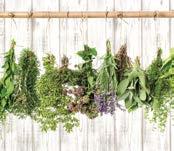
Garlic has antibacterial and antiviral properties that can help fight infections. The bulb is also known to reduce blood pressure and lower cholesterol levels. “Garlic, chives and other plants in the allium family are all important immune-system boosters,” says Conroy.
Getting Started
For first-time growers, an herb garden may sound intimidating, but with patience and care, it can flourish even in small, indoor spaces.
Soothing Support Tea
This tea includes a class of herbs referred to in herbalism as nervines, which work to support and nourish the nervous system and relieve anxiety. While sipping this elegant infusion, visualize the herbs gently smoothing over any frayed nerves with a cleansing wave of calm.
YIELD: 1 CUPLemon balm
Tulsi (holy basil)
Milky oats or oatstraw (avena sativa)
Chamomile
Lavender
Rose petals
Combine equal parts of the organic dried herbs in a bowl. To make a cup of soothing tea, use 1 tablespoon of the herb mixture per 8 ounces of hot water. Steep covered for 10 minutes.

Recipe courtesy of Nadine Clopton. Before consuming any herbal remedies, consult with a doctor or pharmacist for possible interactions with prescription medications or preexisting health conditions.
Conroy recommends trying chives, as they are easy to sprout and thrive in a box or pot. She also suggests starting by growing just one herb at a time.
While Conroy grows her herbs from seed in her own greenhouse, it is perfectly acceptable to buy plants that already have a head start. Clopton suggests plants like lemon balm because it is easy to root from a cutting. She also recommends supplementing soil with organic compost to give plants an extra boost, and making sure growing containers have good drainage.
Adding herbs to an outdoor garden or indoor space is an easy way to shrink our carbon footprint and support pollinators for the good of the planet, all the while saving on groceries. Start small with an herb garden and enjoy the numerous health and other benefits herbs offer.
April Thompson is a Washington, D.C., freelance writer covering food, travel, sustainability and spirituality topics. Learn more at www.AprilWrites.com
Turmeric Eggs
YIELD: 4 SERVINGS
1 onion, sliced thin
3 medium tomatoes, chopped
1 Tbsp ghee
¼ tsp salt
¼ tsp dried, powdered turmeric
¼ tsp black pepper
¼ tsp paprika
5-8 eggs
Cilantro as garnish
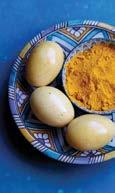
Sauté onions and tomatoes in ghee until soft. Add in spices and adjust to taste. Crack 5 to 8 eggs, add them to the sauté and cover. Wait until the yolk and whites are almost set and stir. Garnish with fresh cilantro.
Copyright © 2017 Madiha M. Saeed, from her book The Holistic Rx: Your Guide to Healing Chronic Inflammation and Disease, published by Rowman & Littlefield. All rights reserved.
Be sure to let our advertisers know you found them in
How to Choose Healthy Snacks
Tips from Dr. Philip Mach

In our modern, fast-paced world, grabbing a quick snack often means reaching for something processed and high in sugar. However, these choices can contribute to weight gain and other health issues over time. Dr. Philip Mach, a practitioner of Pulmonary and Critical Care, Sleep, and Internal Medicine, who is transitioning to become a full-time health coach, emphasizes the importance of selecting snacks that are not only delicious but also nutritious. Here are some of his expert tips and snack ideas to help you make healthier choices.
Mach advises focusing on whole foods and choosing snacks that are low in sugar and processed ingredients. Opt for whole foods that are organic and minimally processed, with natural flavors and colors. Aim for snacks that contain a balance of protein, fiber and healthy fats to keep us feeling satisfied.
Nutrient-Dense Snack Ideas:
1. Hummus and Veggies: Pair homemade or organic hummus with fresh vegetable sticks like carrots, cucumbers or cherry tomatoes for a nutritious and filling snack.
2. Greek Yogurt with Berries: Choose unsweetened Greek yogurt and add fresh berries for a protein-packed snack rich in fiber and vitamins. Consider coconut yogurt as an alternative,
but be mindful of added sugars.
3. Nuts and Seeds: Opt for unsalted and unsweetened varieties of almonds, walnuts or pumpkin seeds, which are excellent sources of protein, fiber, and healthy fats. Macadamia nuts and Brazil nuts are particularly high in omega-3 fatty acids.
4. Roasted Chickpeas: Roast chickpeas with flavorful spices like cumin, paprika or garlic and rosemary for a crunchy and satisfying snack that’s high in protein and fiber.
5. Hard-Boiled Eggs: These are convenient, portable and packed with protein and healthy fats, making them an ideal snack for staying full between meals.
6. Apple Slices with Almond Butter: Enjoy the natural sweetness and fiber of apple slices paired with protein-rich almond butter for a satisfying and nutritious snack.
7. Avocado Toast: Spread mashed avocado on gluten-free or sprouted grain bread for a filling snack loaded with healthy fats and fiber.
8. Roasted Edamame: Roast edamame with a dash of salt and chili flakes for a crunchy and protein-packed snack that’s also high in fiber.
9. Sliced Bell Peppers with Hummus or Guacamole: Low in calories and high in vitamin C, bell peppers make a perfect vehicle for enjoying hummus or guacamole as a nutritious snack option.
Tips for Choosing Commercial Snacks:
n Look for snacks with five ingredients or less to avoid overly processed options.
n Avoid sucralose and Splenda, opting instead for natural sweeteners like stevia and monk fruit.

n Be cautious of sugar alcohols as they can cause digestive issues.
n Avoid snacks with ingredients that can’t be pronounced and that are enriched wheat flour.
n Choose snacks with good amounts of fiber and low sugar content, ideally less than 5 to 7 grams per serving.
n Look for the organic seal, indicating that at least 90 percent of the ingredients are organic.
By following these guidelines and incorporating Mach’s snack ideas into our routine, we can make healthier choices and nourish our bodies with the nutrients we need for optimal health and well-being.
Philip Mach, Functional Nutrition and Lifestyle Counselor, FNLP, CNC, M.D. For more information or to make an appointment, call 609-245-6326 or visit www.LiveFunctionally.com.





It’s not about eating healthy to lose weight… It’s about eating healthy to feel good.
—Demi Lovato


Making Baby Food at Home
Expanding Palates Without Artificial Additives
by Sheila Julson
Like many processed convenience foods, commercial baby food soared in popularity in the post-WWII era as parents spent less time in the kitchen. As 21st-century parents return to their roots and reject industrial creations in lieu of wholesome, scratch-made fare of varied flavors and textures, they want the same for their babies and toddlers.
Dora Babić Cikoš holds a Ph.D., in nutritional science. She and her sister, Ana Weinstein, formed the U.K.-based Creative Nourish resource as a guide for parents that care about their children’s nutrition. Babić Cikoš notes that commercial baby food often consists of artificial preservatives and food colorings which are not beneficial for babies just starting to eat solid food. By making baby food from scratch, preferably with organic ingredients, she explains that parents can minimize exposure to pesticides and unnecessary substances, as well as expand their children’s palates so that they have a smaller chance of becoming picky eaters.
“Store-bought baby food often concentrates on a few foods as the main ingredients and
builds different jars and/or pouches around it, causing the food to be almost always in puree form and of a similar taste,” she advises. “Children that eat homemade baby food, especially if it is adapted for them from the foods that the family also eats for their meal, are exposed to different foods, tastes, textures, spices and ways of serving food.”
Registered Dietitian Amy Reed, the spokesperson for the Academy of Nutrition and Dietetics (AND), notes that the practice of infant feeding is one of many factors affecting how a child develops. In infancy, this may include when solids and textures are introduced, along with genetics and parental feeding styles.
The academy suggests homemade baby food as a way to offer more variety to little ones’ diets. Parents can choose from an assortment of fruits and vegetables in the produce section, and frozen veggies and canned fruits can be added to homemade baby food to help expose babies to a variety of flavors.
Reed says, “If a family chooses to make their own baby food, they can control the ingredients and individualize it. Baby food that is pureed is typically offered at around 6 months of age. Textures should be offered to babies before they are 9 months of age. A delay in texture introduction can be associated with feeding difficulties.”
Making Baby Food with Ease
A food processor, blender or immersion blender allows parents to quickly puree most fruits and vegetables. Softer fruits like peaches can be pureed without cooking, while vegetables such as carrots or sweet potatoes can be baked or broiled. Steaming helps retain the most nutrients. Puree the foods in a blender or food processor and slowly add water if necessary, to make them easier for the baby to eat and digest.
Making baby food allows parents to get creative and add more flavorful, nutritious foods such as pureed kale to a butternut squash recipe. Parents can also manage sugars and salt or add a dash of nutmeg, cinnamon, thyme or milder spices and seasonings for extra flavor.
“Homemade baby food does not have to be complicated, because you are not preparing a five-course meal for your baby,” says Babić Cikoš. “Just giving them the same food you
are eating and cooking for the rest of the family minus the added salt, sweetener, honey or milk, and pureeing or cutting things differently for your baby.”
She notes that price comparisons between homemade baby food and commercial baby food might show that store-bought baby food is more expensive. In addition, homemade baby food can be stored in Mason jars or reusable containers, which cuts down on disposable packaging.
For parents just starting to introduce solid food to their baby, Dora Babić Cikoš, of Creative Nourish advises these purees can offer babies a sample to help decipher what they will or won’t like: www.CreativeNourish. com/21-homemade-baby-food-recipes.
For babies and older kids, this three-ingredient healthy pancake mix takes minutes to prepare and is good for baby-led weaning: www.CreativeNourish.com/ banana-chia-pancakes
The goal isn’t a clean plate. The goal is raising a generation of eaters who know how to listen to their bodies.—Feeding Littles

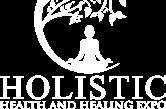

Spring Renewal
Cleansing and Detoxifying with Yoga
by Martha Kein, MBA, E-RYT 500March brings with it the promise of blooming flowers, warmer days and a sense of renewal. As nature awakens from its slumber, we can be inspired by this season of rejuvenation and embark on a journey of cleansing and detoxification. Through the transformative practice of yoga, we can support our bodies and minds in releasing toxins and inviting fresh energy. Let’s dive into the realm of spring renewal and explore how yoga can be a powerful tool for detoxification.
Yoga offers us a holistic approach to detoxification, addressing both the physical and energetic aspects of our being. Through a combination of specific asanas, breathwork techniques and lifestyle practices, we can support the body’s natural cleansing processes and create a foundation for renewal. Here are some practices to incorporate into our routines:
n Twisting Asanas: Twists are excellent for stimulating the digestive system and aiding in detoxification. Poses like Supine Twist (Supta Matsyendrasana) and Revolved Chair Pose (Parivrtta Utkatasana) help massage the internal organs and promote the elimination of waste. Move mindfully through these poses, focusing on deepening the twist with each breath.
n Breath of Fire: This energizing breathwork technique, also known as Kapalabhati, helps invigorate the body and detoxify the respiratory system. Sit comfortably, take a deep inhale and forcefully exhale through the nose while simultaneously contracting the abdomen. Start with a slow pace and gradually increase the speed. Remember to practice with awareness and avoid straining. It’s best to find a tutorial online to help learn the technique.
n Cleansing Rituals: Embrace cleansing rituals that go beyond the mat. Dry brushing the skin before showering can stimulate circulation and promote the elimination of toxins. Consider incorporating a tongue scraper into our morning routine to remove accumulated toxins from the tongue.
n Mindful Eating: Support the body’s detoxification process by adopting a mindful approach to eating. Focus on nourishing foods that are rich in antioxidants, fiber and essential nutrients. Incorporate plenty of fresh fruits and vegetables, whole grains and hydrating herbal teas into the diet. Consider including a day of fasting or consuming light meals to give the digestive system a break and allow it to reset.

Spring is the ideal time to declutter not just our physical spaces, but also our minds. As we engage in our yoga practice, invite mindful reflection and release any mental and emotional clutter. Embrace meditation as a powerful tool for mental detoxification, helping to let go of negative thought patterns and inviting a sense of peace.
Spring renewal is not about pushing yourself or striving for perfection; it’s a gentle process of reconnecting with yourself and honoring your body’s innate wisdom. Listen to the body’s cues, respect our limitations and approach one’s practice with self-compassion and patience.
As we embark on this journey of detoxification and renewal, savor the blossoming beauty of nature around us. Allow the fresh energy of the season to inspire and uplift us. Embrace the opportunity to release what no longer serves us and invite in a sense of lightness and vitality.
With each breath, each twist and each moment of self-care, we are creating a space for transformation and rejuvenation. Embrace the cleansing power of yoga this month and step into the season of renewal with a revitalized body, mind and spirit. Happy spring and may we all blossom into our best selves.
Martha Kein is the school director of The American Yoga Academy, a world-renowned, online yoga teacher training school that’s been training and certifying yoga instructors for 30 years, and where all are welcome. For more information, call 973-731-9960 or visit https://americanyogaacademy.com.
The Power of Positive Affirmations and Mindset
Transforming Your Life
by Shae Marcus
Life has an extraordinary way of responding to the words we choose and the mindset we embrace. We’ve all been there—been caught in the whirlwind of our daily routines and finding ourselves uttering phrases like “I’m so tired” or “I can’t seem to get ahead.” It’s almost as if we inadvertently summon more chaos and exhaustion into our lives. But here’s the beautiful secret: We have the power to change the narrative and create a life filled with positivity, abundance and joy.
I recently found myself in that cycle, overwhelmed by the demands of daily life, perpetually chasing order in the midst of chaos. It’s incredible how easily we can become trapped in our own self-limiting beliefs. However, I made a promise to myself to break free from this cycle and embrace a more uplifting mindset. I decided to start my day with a simple yet profound practice—positive affirmations.
Gratitude became my anchor. I began by acknowledging and appreciating the full plate that life had served me. The simple act of gratitude can work wonders in shifting our perspective and setting the tone for the day. But it didn’t stop there; I needed more tools to transform my mindset. That’s when I decided to invest in audiobooks. Although I am an avid reader, I wanted something that would be easy for me to dedicate the time to daily.
The first audiobook I chose to listen to was Louise Hay’s You Can Heal Your Life. While listening to her soothing words with my eyes closed, I allowed her story of trials and triumphs
to wash over me. It was a powerful experience. I realized that these stories about the power of our own self-talk were like a soothing balm for my soul, gradually shifting my mindset from one of lack to one of abundance. I could feel the change happening within me.
I moved on to my next audiobook, Gabrielle Bernstein’s The Universe Has Your Back. The daily ritual of listening, whether for just 10 minutes or as long as 30, had become my daily dose of positivity and mindset transformation. I found myself eagerly looking forward to these moments, and they became a sanctuary of inspiration and empowerment in my day.
I can’t stress enough how simple it is to incorporate this practice into your life. You can play the audiobook in your car during your commute, or right after waking up, setting a positive tone for the day. You can even listen while folding laundry or during those precious few minutes of solitude. The power of these affirmations to shape your mindset is astonishing.
The narrative we tell ourselves has a profound impact on our souls and, ultimately, our lives. When we change our mindset, we open ourselves to a world of possibilities and positivity. The power of positive affirmations is real, and it’s within your reach. Don’t underestimate the profound difference it can make in your life. Embrace the change, and watch as your life transforms into the beautiful, abundant reality you’ve always dreamed of. You have the power to make it happen.
Shae Marcus is publisher of Natural Awakenings South Jersey.
Revolutionizing Wellness:
The EESystem’s Breakthrough in Cellular Healing

Like a wireless battery charger, the Energy Enhancement System (EESystem) recharges the human body and delivers the energy a body needs to heal itself.
More specifically, it provides the energy that a body’s cells require to repair mitochondrial and DNA damage, reversing effects caused by a multitude of toxic exposures—herbicides and pesticides, highly processed foods, chemicals in drinking water, pharmacological medicines and air pollutants.
Perhaps, more importantly, the EESystem technology is designed to nullify the harmful levels of radiation of modern technologies, such as radiation therapy and X-ray diagnostics, wireless cell phones and laptops, 5G antennas, smart meters and more. Everyone is affected by some of these factors to a lesser or greater degree, and the result can be disease.
The EESystem technology works by generating bio-active energy fields with scalar waves to create an optimal healing environment of 70 to 90 millivolts, which supports the body in rebalancing and regenerating on a number of levels.
For example, this method has been shown to quadruple mitochondrial activity within cells. The main function of mitochondria organelles is to generate the energy necessary to power
cells, and the scalar wave technology enhances this ability. The EESystem also claims to facilitate the lengthening of telomeres, potentially reversing aspects of cellular aging.
Developed over 20 years ago by Dr. Sandra Rose Michael, Ph.D., DNM, the revolutionary EESystem technology uses custom installed computers to deliver polychromatic and scalar therapy The Quantum Healing Room is one of 350-plus centers that have opened to the public within the past year.
In this space, scalar waves, biophotons (light) and color therapy energies are carefully positioned and calibrated. The system is designed so that these waves converge in the center of the room, purportedly creating a “zero point.” This is believed to neutralize harmful energy fields and transform them into beneficial energy.
Each EESystem room has a number of screens, and each screen displays a set of vibrant colors and lines of code that move at varying speeds up or down, emitting photons of light. The biophotons stay within the room, while the scalar waves travel 2.2 miles upward and outward into the surrounding community. A scalar field is known as a fifth-dimensional, non-linear field, existing outside of relative time and space, unbounded and capable of passing through solid matter.
As people set their intentions, close their eyes and relax into the morphogenic energy field created by the system, some individuals
are capable of entering a state of consciousness as deep as a meditative monk, often within seven minutes. This relaxed state aids the body’s ability to heal.
Studies of the EESystem technology have shown it can help the body repair DNA, reduce inflammation, relieve pain, improve circulation and immune function, detoxify, elevate mood and assist in balancing right and left brain hemispheres for better sleep states. In essence, the system provides the source for the DNA to restore to its original blueprint and for the body to achieve optimum health.
The EESystem does not target a specific part of the body, but instead creates an optimal environment, promoting the innate intelligence of the cells to reach 70-90 millivolts as previously stated. This allows the cells to function optimally and provide benefits to the entire body. Unhealthy cells have a lower charge, such as 20 millivolts.
Additionally, the EESystem combines body, mind, spirit and science to significantly increase energy, mental clarity, mental health and overall well-being. This ecologically and environmentally safe system is used by doctors, therapists, and individuals, as well as meditation and wellness centers worldwide.
It has been recognized at dozens of international medical, scientific and professional conferences. While most people have been unfamiliar with scalar technology up until now, it has been well known in the fields of astrophysics, geology and hydrodynamics.
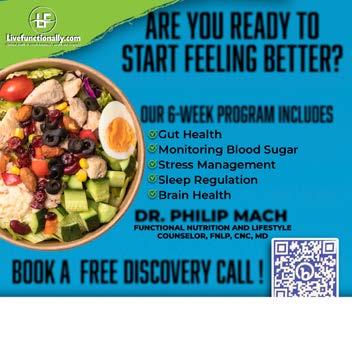


Anecdotal evidence is building up.
The Importance of Detoxification
The Quantum Healing Room suggests a salt soak detoxification protocol within 24 hours of an EESystem session to assist in purging toxins released from the cells as a result of the biophotons. Staying well-hydrated before, during, and after your session is crucial as it not only helps to mobilize toxins but also enhances healing, especially as the water absorbs the system’s energizing charge.
Complement this care with a nourishing diet to maintain a balanced and alkalized state for optimal health. The power that made the body, heals the body.
The Quantum Healing Room is located 615 West Ave., Jenkintown, PA. For more information or to make an appointment call 215-821-7095 or visit
www.QuantumHealingRoom.org
Wendy Nadherny Fachon is a frequent contributor to Natural Awakenings magazine.

Functional Medicine Approach to Colon Health
Simplified Steps to Repair and Restore the Gut
by Madiha Saeed, M.D.In the United States, colorectal cancer is one of the most common types of cancer. According to the American Cancer Society, the disease is expected to precipitate approximately 53,000 deaths in 2024, and incidence rates for people under 55 have been increasing by 1 to 2 percent each year. Regular screenings and lifestyle improvements, including a healthy diet and regular exercise, can decrease the risk.
“The gut is the root and the foundation of health,” says Vincent Pedre, M.D., a board-certified internist specializing in functional medicine and the best-selling author of The GutSMART Protocol. In addition to dramatically improving overall health, his protocol incorporates science-backed lifestyle modifications that have been shown to optimize gut health and reduce the incidence of colorectal cancer.
Optimizing Digestive Health
Research has proven that chronic inflammation is highly correlated with the development of colorectal cancer. A functional medicine approach begins by easing inflammation and then taking steps to restore the population of healthy bacteria in the gut by replenishing nutrients, repairing the gut lining, rebalancing the body and managing stress.
Putting out the fire in the gut: The first step is to remove the possibly offending triggers of inflammation, beginning with gluten; grains; dairy; sugar; soy; nutrient-depleted foods containing artificial ingredients, preservatives and additives; processed foods; genetically modified foods; and any ingredient for which there is a sensitivity. A practitioner can also test for and address chronic illnesses that may be impacting the gut such as hepatitis, Epstein-Barr and other viral and fungal infections.
Replenishing nutrients: To restore the vitamins, minerals, nutrients and other essential ingredients needed for proper digestion and absorption, it is important to incorporate more organic, whole foods in the diet, but
that is not the full story. As Pedre explains, “There is not one right diet. If you eat foods that you cannot break down into little nutrients and absorb, then it doesn’t get broken down and tends to feed bad bugs that can grow inside of you. We really need to think about whether our gut is capable of breaking down the foods we actually eat because that is really what determines whether the diet is right for you.”
In his book, Pedre offers a quiz that helps people determine their level of gut dysfunction. Alternatively, a practitioner can evaluate stomach acid and digestive enzyme levels to ensure that food is being broken down properly. “Digestive enzyme supplements can help pick up where your body might
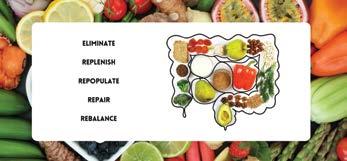
be falling short, breaking down your foods, making them more digestible,” explains Steven Wright, co-founder of the Healthy Gut Company. To help support the gut microbiome, Pedre recommends altering the diet to increase the number and quantity of vegetables and fermented foods, such as sauerkraut and kimchi.
Restoring the balance of good bacteria in the gut: Crucial for colon and overall health is a robust population in the gut of probiotics (the good bacteria) and prebiotics (the food for probiotics). Fermented foods are excellent probiotic sources, while green, leafy vegetables and other high-fiber foods, as well as asparagus, carrots, garlic, leeks, raw onions, radishes and tomatoes, are some of the best prebiotics. If levels are insufficient with just food, probiotic and prebiotic supplementation may be necessary.
Repairing the gut lining: Our intestines are lined with millions of cells that create a tight barrier—the gut lining—which in essence determines what is absorbed into the bloodstream and what stays in the gut to eventually be eliminated. When the gut lining is not healthy, however, the barrier is not able to perform its job properly, allowing toxins and bacteria to leak into the body and preventing the system from properly absorbing nutrients. To repair the lining naturally, it is imperative to eat plenty of organic, whole foods that include zinc; vitamins A, C, D and E; omega-3 fatty acids; and selenium.
Rebalancing our lifestyle: “Slowing down when you eat and saying some prayers between bites is a real big deal,” Wright advises. “It allows your gut to make acid in your stomach and make enzymes work in your intestines.” He also recommends playing and spending time outdoors with our hands in the dirt and breathing in the smells and molecules that “tell our body that it is a normal environment.” Activities like gardening and yard work add diversity of microbes from the soil and will help to balance our microbiome.
Managing stress: “Stress is an attack on your gut, a self-induced attack,” Pedre notes. By incorporating coping techniques, exercise routines, consistent sleep patterns and time in nature, we help optimize gut healing and maintain the body’s well-being and balance.
Madiha Saeed is a holistic, functional and integrative doctor in Naperville, Illinois, and director of education for Documenting Hope and KnoWEwell.
NATIONAL PRODUCT PICKS

Therasage is the gold standard for energy healing, naturally healing infrared, negative ions and eliminating EMFs
Therasage.com
Scan to register for educational webcast to learn more.

Sensiband is the simple, affordable, at-home self-test for metal allergies before joint replacement surgery.
Sensiband.com
Scan to register for educational webcast to learn more.

Founded in 1932, Boiron, the world leader in homeopathic medicines, is best known for its popular Arnicare® line of pain relievers and Oscillococcinum® flu reliever.
BoironUSA.com
Save 20% with code NA20
OB/GYN-formulated with DHEA and Alpine Rose Stem Cells Rejuvenates vaginal tissue, restores natural moisture, and helps prevent bladder leaks.
Health is much more dependent on our habits and nutrition than on medicine.
—John Lubbock
DrAnnaCabeca.com/ products/julva
Traditional Chinese Veterinary Medicine
Supporting Pets With Ancient Healing Wisdom
by Kiki PowersFor years, we have seen a growing appreciation in contemporary culture for Traditional Chinese Medicine (TCM) and the complementary role it can play within Western medicine. Based upon thousands of years of observation, this natural healing approach can be valuable not just for humans, but also for animal companions.
Traditional Chinese Veterinary Medicine (TCVM) includes the use of food therapy, acupuncture, Chinese herbs and tui-na massage to maintain health and treat disease. Some pets with chronic arthritic pain, inflammatory bowel disease, nerve damage, epilepsy, cancer and other long-term ailments may not respond well to conventional treatments, or the side effects of Western medicine may cause even more problems. That is when TCVM can intercede to provide relief.There are a few basic principles governing TCVM. Qi

is the life force that flows freely when a pet is healthy and may be blocked or weak when a pet becomes ill. Yin-and-yang refers to the interplay between natural dualities—such as light and dark or hot and cold—and the need to maintain a balance between these opposing properties. There are five elements—wood, fire, earth, metal and water—which also need to be in balance for optimal health. During an examination, a TCM vet will determine what is out of balance and develop a customized treatment plan.
Food Therapy
Dr. Ruth Roberts, an integrative veterinarian and pet health coach, applies TCM principles when designing a whole-foods diet to optimize pet well-being and support healthy longevity. “Under TCM principles, foods have warming, cooling or neutral properties when they interact with a pet’s natural energy, and the goal is to find a balance,” she explains. “Many pet ailments may stem from or be related to imbalances within the body, as well as environmental factors, all of which underscore the need for the proper nutritional balance.”
According to Roberts, in a hot climate, a pet might need cooling foods, such as turkey, fish, banana, celery, kelp, spinach, broccoli, cabbage, cucumber and melon. In colder temperatures, warming foods such as mutton, deer, chicken, ginger, squash and pumpkin are advisable. When designing a balancing diet, neutral foods may be needed, including pork, bison, salmon, tuna, carrots, green beans, peas, olive oil and shiitake mushrooms.
Acupuncture
Veterinary acupuncture is becoming increasingly popular to relieve pain or treat ailments, including allergies, seizures, reproductive problems and liver and kidney disease. The procedure involves the insertion of very thin needles into specific points on the body, thereby stimulating nerve endings, which then conduct impulses to the brain and spinal cord. It is best to consult an experienced, licensed acupuncturist or TCVM specialist that specifically treats pets.
In a 2017 study published in the Canadian Veterinary Journal,
researchers found, “Acupuncture alone or in combination with analgesics reduced pain and improved quality of life in dogs with neurological and musculoskeletal diseases. Dogs with musculoskeletal disorders had a better improvement in chronic pain and locomotion than those with neurological disorders.”
Chinese Herbs
TCVM uses a number of herbs, roots, mushrooms, bark and other plant-based ingredients to help pets with immune dysfunction, gastrointestinal issues, skin conditions, liver and kidney disease and other long-term, chronic conditions. When it comes to more serious pet health issues, such as osteosarcoma (bone cancer), Roberts suggests the strategic use of full-spectrum hemp extract (CBD), cannabis oil (THC) and medicinal mushrooms. Dosages will differ for each individual pet. It is best to consult an integrative veterinarian or pet nutritionist.
“In several documented cases, a combination of homeopathy, TCM, medicinal mushrooms and CBD-THC solutions working together synergistically with a healing diet have helped dogs outlive their bone cancer diagnosis without harmful side effects, stressful procedures or complicated vet visits, all at a dramatically reduced cost,” Roberts says. “As they say, ‘An ounce of prevention is worth a pound of cure,’ especially where our beloved animal family members are concerned.”
Tui-Na Massage
Also under the TCVM umbrella, tui-na massage uses kneading, pressing and rolling techniques to improve a pet’s health and balance. Among the conditions that respond well to this type of massage are arthritis, muscle tension and soreness, stress and anxiety, joint paint and mobility issues. The technique focuses on stimulating acupuncture points and energy pathways, or meridians, that promote the smooth flow of qi throughout the body. This treatment can be used in conjunction with complementary therapies to enhance results.
Integrative Medicine
“I strongly believe Traditional Chinese Medicine is good medicine. Western medicine is great medicine. However, the best medicine is an integration of both because each of them has their own strengths and weaknesses,” says Dr. Huisheng Xie, DVM, Ph.D., a clinical professor of integrative medicine at the University of Florida College of Veterinary Medicine, in Gainesville.
According to Xie, TCVM is weak in diagnosis because it does not have sophisticated diagnostic technology. Western medicine’s weakness is the large amount of side effects associated with conventional drugs. “That’s why the best medicine is to integrate both to avoid the weaknesses and take advantage of the strengths of each,” he says.
Kiki Powers is a health writer, blogger and national speaker specializing in plant-based nutrition and healthy green living. Learn more at www.RawKiki.com.



Pollinator Corridors
Tips to Reestablish Lost Habitats
by Kelcie OttoesAwell-known Chinese proverb says, “The flapping of the wings of a butterfly can be felt on the other side of the world,” poetically reminding us that small actions can produce large effects. When it comes to the world’s disappearing pollinators, the modest steps we take today can generate life-saving results tomorrow.
According to the U.S. Fish and Wildlife Service (FWS), “Pollinators provide vital benefits to people and wildlife, keeping animals and plants that we depend on thriving while bringing us food and supporting the economy.” Almost 90 percent of flowering plants depend entirely or in part on animal pollination, and yet, the FWS reports that pollinator populations are on the decline. One way to support these important species is to create a pollinator corridor—a pesticide-free, native-plant zone that provides food and shelter for indigenous pollinators.
The Pollinator’s Role
While the word pollinator may conjure up images of butterflies and bees, the category is much broader and includes birds, bats, lizards, moths, flies, beetles, wasps and some small mammals. “Virtually every ecosystem on Earth that contains flowering plants depends on animal pollinators,” says Kim Eierman, author of The Pollinator Victory Garden: Win the War on Pollinator Decline with Ecological Gardening. “Many are keystone species in the
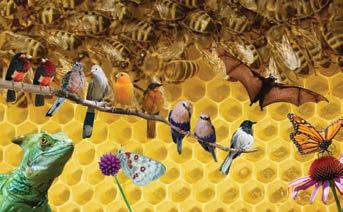
ecosystems where they occur. If a keystone species becomes extinct or vanishes, that ecosystem fundamentally changes, and not for the better.”
From apples, melons and potatoes to almonds, coffee and cocoa, the food we eat is not available without pollination. Losing just one pollinator can have a significant impact. Without bees, fruit and nut trees produce fewer and smaller crops, if any. Of the top 100 edible flowering crops, 80 are pollinated by honeybees.
“Every ecosystem is dependent on pollinators to maintain healthy environmental balances in global food webs,” explains Jen McDonald, the founder of Garden Girls, a Houston-based company that designs and installs home landscapes. “Pollinators don’t make food just for us, but also for livestock and virtually all other living things. Many plants that require pollination are also needed for shade habitats for birds, insects and small animals.”
Challenges Facing Pollinators
The decline in pollinators is attributed to a loss of feeding and nesting habitats that occurs when native plants are replaced by non-native grasses, farmlands and urban landscapes. Pesticides, chemicals, parasites, non-native species, new diseases and climate change are also modern-day threats. Monarch butterflies are considered vulnerable to extinction. Nearly one in four bees (347 native species) are at increased risk of extinction. More than half of the 154 North American bat species are at severe risk of population decline.
Designing a Pollinator Corridor
The good news is that when native plants are re-introduced, pollinators return. “Abundant, diverse pollinators ensure fertile, resilient landscapes and secure food systems for communities, and backyard gardens can restore numbers that strengthen regional plant reproduction,” says Kiersten
Rankel, a botanist for Greg, an app that helps people optimize their plant-growing efforts.
To get started, select a strip of land, rooftop, wall or yard that supports pollinators, including their migration, foraging and overwintering. Next, pick native and flowering plant species for the space. Perennials require less maintenance, as they come back each year. Start small. Even a few potted plants or a converted curb strip can have a big impact. Avoid using pesticides and herbicides. Beyond flowers, be sure to also include shrubs, twigs, rotting logs, branches, vines, ground cover and bare gravel. Determine if it is helpful or harmful to remove leaves from the ground in the fall and reduce or eliminate mowing practices, especially on roadsides or curbs.
To make a bigger impact, talk with neighbors and community members to create a larger corridor. Consider working with local schools, colleges, nature-focused nonprofits, government officials that oversee parks and city planning, nurseries and farmers. The more people that are involved and invested in the corridor, the higher the odds of its continuing success.
Create a map to see the full footprint of the corridor; fill any gaps and remove invasive plant species. Include a wide diversity of native plants to serve pollinators at each stage of their life cycles. The Wild Seed Project suggests having at least 10 pollinator-friendly plants to support them year-round with continuous blooms and shelter.
An example of a giant pollinator corridor is Project Wingspan, located in the Midwest and Great Lakes region. The people behind this program are striving to create 18,000 acres of high-quality habitat to support local wildlife and pollinators. On a smaller scale, the town of Orleans, Massachusetts, is working to ensure their entire community is pollinator friendly.
There has never been a better time to start or join a pollinator corridor. Those efforts could be the flap of a butterfly’s wing that changes the future for these vital creatures.
Kelcie Ottoes is a content writer for sustainable businesses, specializing in blog posts, case studies and white papers.

NARRATED BY
MICHAEL BUBLÉ"Like so many families, I have been deeply affected by Alzheimer's, so I was thrilled to become a part of this film when I realized that there's hope, and it's not just a death sentence."- Michael Bublé


Spring: the music of open windows.—Terri Guillemets

Calendar of Events
Email Publisher@NAPhiladelphia.com for guidelines. We advise confirming in advance directly with the business or organization.
Saturday, March 2
SoulFlow – 11am-12pm. Experience a transformative somatic embodiment practice that guides you intuitively, free from choreography. Rooted in the philosophy of 3 M’s and structured around 4 phases—Movement, Meditation and Mantra—SoulFlow empowers you to transcend trauma, shed limitations, and embrace your true self. Modrn Sanctuary, 1420 Walnut Street, Suite 1212, Philadelphia. www.ModrnSanctuaryPA.com
Sunday, March 3
Free Days – Philadelphia Museum of Art – 10am-5pm. On the first Sunday of the month enjoy hundreds of fascinating exhibits for free at the premier Philadelphia Museum of Art located at 2642 Benjamin Franklin Pkwy., Philadelphia. www.PhilaMuseum.org
Tending the Garden—A Family Connection Class – 1:30-3pm. This class for the whole family will help build a foundation for kindness and connection, emotional regulation, and mindfulness with fun activities and exercises. Six weeks, $180 per family. Beehive at Bok, 1901 S. 9th St., Philadelphia. www.BeehiveAtBok.com
Tuesday, March 5
Free Yoga for Adults – 2-7pm. Join Anne-Marie Mulgrew for a one-hour, all-levels yoga class for adults. Free. Whitman Library - Free Library of Philadelphia, 2046 S. 2nd St., Philadelphia. www.FreeLibrary.org/locations/whitman-library
Wednesday, March 6
Mind and Mood Recharge – 5-8pm. Mind & Mood Recharge is a chance to hit pause on the hustle and bustle of a busy work week with multi-sensory moments of recharge and rejuvenation. General admission, $18. Penn Museum, 3260 South St. Philadelphia. www.Penn.Museum
Saturday, March 9
Transformational Breathwork – 1-2:30pm. Join Malarie to heal and transform through the power of breathwork. Tula Yoga Philly, 737 N. 4th St., Philadelphia. Contact@BreatheBodySoul.com.
Sunday, March 10
Scribe & Sage Workshop – 12pm. Join Jenna Faccenda for this monthly intimate gathering where the art of writing intertwines with the power of ritual. Explore creativity and connection with fellow writers. In-person sliding scale: $25 to $45. Sacred Path Herbal Collective, 331 East Girard Ave., Philadelphia. www.TheSacredPathCollective.com
Sunday, March 10
Virtual New Moon in Pisces Ritual & Meditation (March) – 6-8pm. Join this monthly virtual New Moon Circle and be led through a guided meditation and special ritual to celebrate the New Moon in Pisces this year. Be in support with one another and have a safe space to create, empower, and build individual/collective
healings and growth in ritual and ceremony. Sliding scale of $10 to $40. Prana House, 104 South High Street, West Chester, PA. www.TheSacredPathCollective.com
Friday, March 15
7 Chakras Flow with Josie – 7:30-9pm. Join Josie for a Spring Equinox Celebration of the Chakras. A movement practice to journey through the energetic centers, clearing the way for a season of renewal and rebirth. All levels welcomed. Cost: $40. Lumos Yoga & Barre Green Street, 2001 Green St. Philadelphia. www.Momence.com
Sunday, March 17
Healing Sound Bath Meditation & Yoga - “Maze of Tranquility” – 3-4:20pm. Join Eunmi Chang, for a deeply relaxing, meditative experience and discover a tranquil journey of healing and self-discovery. Cost: $40. Lumos Yoga & Barre Green Street, 2001 Green St. Philadelphia. www.LumosYogaAndBarre.com
Tuesday, March 19
Claymobile Visit – 4pm. Create pottery and sculpture with a professional teaching artist from The Clay Studio! For school-age children and families. Free. Richmond Library - Free Library of Philadelphia. 2600 E. Indiana Ave., Philadelphia.
Wednesday, March 22
Mini-Retreat for Caregivers Children
Birth-5 – 10am-2pm. If you are a caregiver to someone with intellectual and/or developmental disabilities, including autism, this is your time to connect with other caregivers. Learn about simple, yet effective ways to decompress. Free. Rivers Casino, 1001 N. Delaware Ave, Philadelphia.
Serene Soundwaves – Immersive Chrystal Bowl Sound Bath – 7:30-8:30pm. One hour-sound bath to slowly heal, restore and awaken our deepest, all-knowing selves. Tula Yoga Philly. 737 N. 4th St., Philadelphia. www.TulaYogaPhilly.com
Tuesday, March 26
Crystal Reading with Priscy – 6-8pm. Get ready for an exciting week dedicated to Crystal Readings and learn the ropes of doing crystal readings for friends and family. Plus, each student gets their own crystal bag for readings and study materials. Cost: $33. Modrn Sanctuary, 1420 Walnut Street, Suite 1212, Philadelphia. www.ModrnSanctuarypa.com
Community Resource Guide
Connecting you to the leaders in natural health care and green living in our community. To find out how you can be included in the Community Resource Guide, email Publisher@NAPhiladelphia. com to request our media kit.
Homeopath
WHITE HAWK HOLISTIC WELLNESS CENTER
Jennifer Armento, Homeopath PHOM, Clinical Herbalist Tabernacle, NJ 732-778-5023
WhiteHawkHolistic.com
Homeopath and herbal consulting for acute and chronic illness. Offering holistic workshops, homeopathic classes, herbal products, quantum bioscan sessions and a raw food co-op.
Love, Sex & Relationship Coach
TEJA VALENTIN COACHING, LLC
609-905-LOVE
108 W Merchant St, Audubon, NJ 08106 Teja@TejaValentin.com • TejaValentin.com
Are you ready to live fully tapped in and turned on? If you are a yes, then this is your sign. Find your purpose, feed your passion, and free your pleasure. Learn to embrace and empower yourself to live and love to its fullest potential through transforming old blocks, fears and stories. Return to your true nature where sex is sacred, beautiful and healing; where being empowered is not being something we are not, but rather being whole and integrated. Together we will work deeply in a safe and gentle loving container. I work primarily with women and couples who are ready to commit to themselves.
Wellness Collective
WELLNESS COLLECTIVE
Modrn Sanctuary Philadelphia 1420 Walnut Street, Suite 1212 Philadelphia www.modrnsanctuarypa.com
A unique wellness center featuring an integrative menu of traditional and alternative beauty, wellness, and alternative healing therapies and treatments all under one roof.
Be sure to let our advertisers know you found them in



Saturday,
